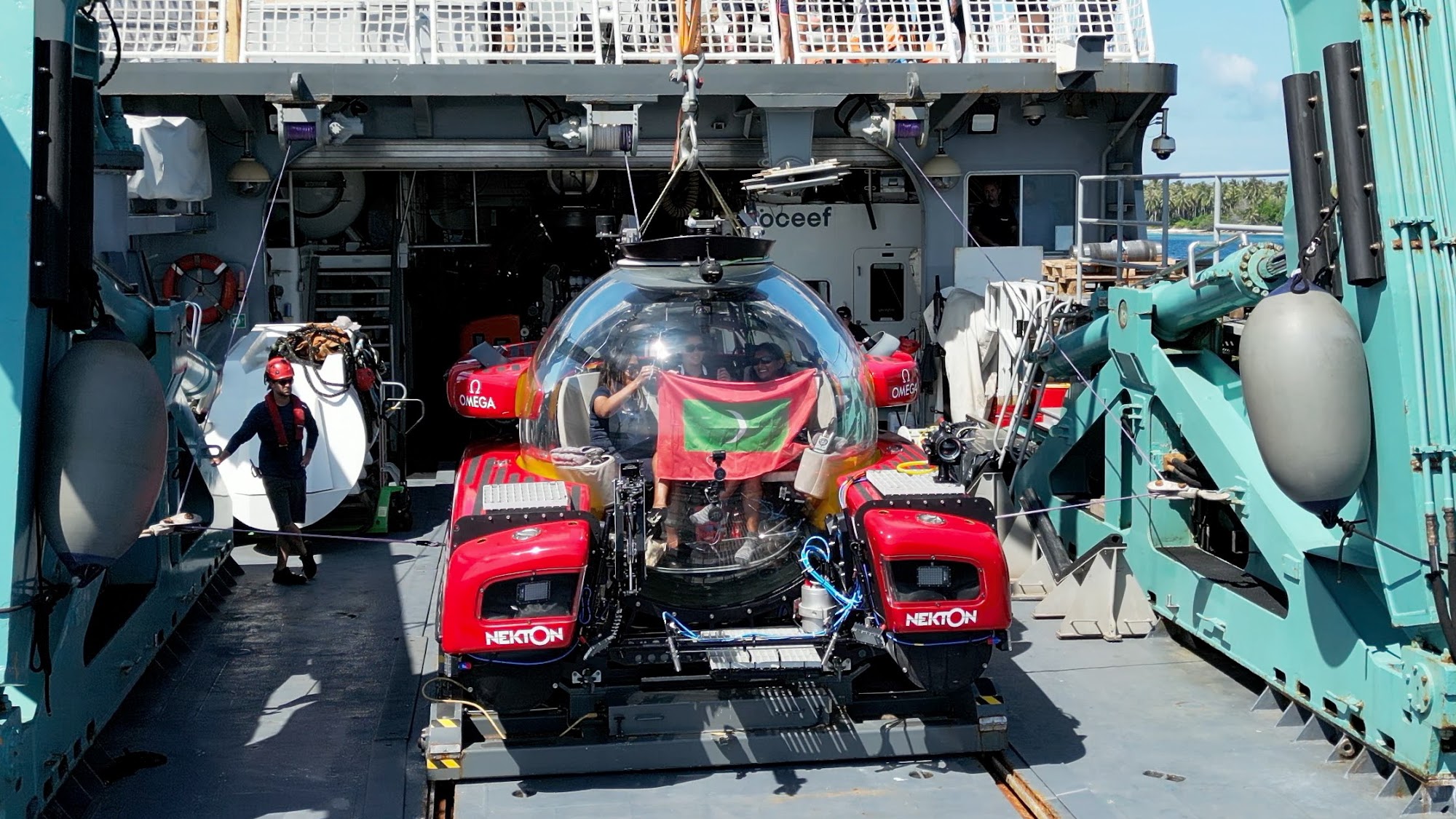Malé, Maldives – First ever systematic discovery and documentation of ocean life in Maldives from the surface to 1000 meters, Nekton Maldives Mission has been successfully completed.
In a tweet posted by the UK-based research foundation, Nekton announced that their Maldives mission came to an end after 5 weeks. The mission began on September 4, 2022.
The expedition is a joint initiative by UK-based Nekton and the Maldives government to map, sample and gather data on ocean health which can inform policy makers both in the Maldives and beyond as the climate crisis deepens. Virtually no images exist of marine life in Maldivian waters below 30 meters until now.
In a press conference held yesterday at the President’s Office following the end of the mission, Minister of Fisheries, Marine Resources, and Agriculture Hussain Rasheed Hassan told that over 300 square kilometers of ocean between Malé Atoll and Addu Atoll had been charted under the mission. This is bigger than the land area of the entire Maldives.
It was also revealed that dives to the depth of 500 meters were carried out using the advanced human-occupied submersibles and up to 900 meters was surveyed using robotic and autonomous systems.
Nekton Maldives Mission also made history after the expeditors mapped a deep-sea mountain off the coast of Maldives; famously known among Maldivian fishermen as ‘Satho Rahaa’, named to honor of a Japanese scientist who first tried to explore it a generation ago.
Nekton Maldives Mission’s survey showed that the mount is 15 nautical miles in circumference and the peak is at a depth of 300 meters from the surface while the base of the summit was recorded at 1,500 meters.
Speaking at the press conference, Chief Executive, Mission Director of Nekton, Oliver Steeds told that they had identified the beach line of Maldives 20,000 years ago when sea levels rose following ice melt from the Last Glacial Maximum. According to the survey, the beach line was at 120 meters below sea level from now.
It was also revealed that the data and video from the expedition will be publicized on Monday. The survey was carried out with the agreement of Maldivian government taking ownership of all the biological data from the mission.





